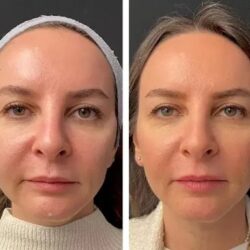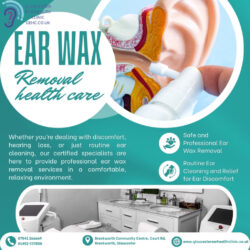In today’s fast paced professional world, employee health is more than just a priority, it’s a necessity. At First Care Family Clinic, we understand how crucial Occupational Health is for both employers and employees. A healthy workforce not only ensures productivity but also builds a culture of care, safety, and long term success. From workplace injury prevention to employee wellness programs, modern occupational health solutions are designed to meet the evolving needs of today’s businesses and their teams.
What Is Occupational Health?
Occupational Health focuses on maintaining and improving the well being of employees in their work environment. It includes preventive care, early detection of work related illnesses, and promoting overall physical and mental wellness. The goal is to create a safe, efficient, and supportive workspace that benefits both the organization and its people.
Occupational health professionals work closely with businesses to assess risks, identify hazards, and implement safety measures. These experts also monitor employee health to ensure that job duties do not negatively affect physical or mental well being.
Why Occupational Health Matters in Modern Workplaces
As workplaces evolve, the risks employees face also change. With the rise of desk jobs, long screen times, and demanding schedules, new health challenges such as stress, posture issues, and burnout have become common. On the other hand, industries like construction and manufacturing continue to face traditional risks like injuries and exposure to chemicals.
Modern occupational health programs address both physical and psychological aspects of workplace well being. They aim to reduce absenteeism, boost morale, and enhance overall productivity making them an investment that pays off for businesses in the long term.
Key Elements of a Strong Occupational Health Program
A successful occupational health plan is not one size fits all. It adapts to the unique demands of each workplace and workforce. Below are some essential elements that define effective occupational health strategies:
- Workplace Risk Assessment
This involves evaluating potential hazards within the workspace, from physical risks like slippery floors to ergonomic issues caused by poor seating or equipment setup. - Injury Prevention and Management
Early identification of hazards and safety training helps prevent workplace accidents. In case of injuries, immediate treatment and rehabilitation minimize downtime and long term damage. - Employee Wellness Programs
These programs focus on preventive healthcare, regular screenings, and promoting healthy lifestyle habits among employees. - Occupational Medicine Services
Includes medical evaluations, drug screenings, physical exams, and health certifications required for specific job roles. - Mental Health Support
Stress management, counseling, and promoting a positive work culture play a vital role in maintaining emotional balance and preventing burnout.
Each of these components works together to build a healthier, safer, and more productive work environment.
Modern Workplace Challenges and Solutions
Every modern workplace faces unique health challenges. Recognizing and addressing them early can prevent larger issues down the road. Let’s look at how today’s occupational health practices are tackling common challenges effectively:
- Ergonomic Injuries
With many employees spending hours at desks, repetitive strain injuries and back pain have become widespread. Ergonomic assessments and workstation redesigns help reduce these risks. - Workplace Stress and Burnout
Mental health awareness programs and stress management workshops encourage employees to seek help early and maintain balance. - Occupational Diseases
In industries involving chemicals or heavy machinery, regular health screenings and safety protocols are vital to prevent exposure related conditions. - Sedentary Lifestyles
Encouraging movement breaks, on site fitness programs, and corporate wellness initiatives counteract the effects of long sitting hours.
These modern solutions combine technology, preventive medicine, and employee education to create healthier, more engaged teams.
How Employers Benefit from Occupational Health Programs
Employers often view occupational health as an expense but it’s actually an investment with measurable returns. Businesses that prioritize employee well being experience several advantages:
- Reduced Absenteeism
Healthy employees take fewer sick days, leading to consistent productivity. - Improved Performance
Workers who feel cared for are more focused, motivated, and loyal. - Lower Turnover
Strong health and safety programs improve job satisfaction and reduce employee attrition. - Compliance with Regulations
Adhering to occupational safety standards prevents legal issues and maintains the company’s good reputation. - Better Company Image
A reputation for caring about employees’ health attracts top talent and strengthens brand trust.
Occupational health creates a win-win situation where both businesses and their people thrive together.
Technology and Occupational Health: A New Era
The digital age has transformed the way occupational health services are delivered. From remote health monitoring to virtual consultations, technology ensures faster diagnosis, better communication, and improved employee engagement.
Wearable devices track vital signs, apps help manage stress, and online wellness programs make health support accessible anytime, anywhere. These innovations have made occupational health more personalized and proactive.
Building a Culture of Wellness at Work
A workplace that values health inspires loyalty and teamwork. Building a wellness culture starts with leadership when management encourages open communication and healthy habits, employees follow.
Organizations can promote this by offering healthy snacks, mental health days, fitness challenges, or flexible schedules. Simple initiatives like ergonomic equipment or mindfulness sessions can make a big difference in how employees feel and perform.
How First Care Family Clinic Supports Occupational Health
At First Care Family Clinic, we offer comprehensive Occupational Health services designed to meet the needs of today’s employers and employees. Our services include employee health screenings, injury management, vaccinations, and wellness programs that keep your team healthy and compliant with safety regulations.
We believe that a thriving business begins with healthy employees. Our experienced medical team works closely with companies to provide preventive care, early intervention, and long term health solutions that benefit both the organization and its workforce.
Conclusion
Modern workplaces demand modern health solutions and that’s exactly what Occupational Health provides. By combining preventive care, mental wellness, and workplace safety, organizations can create an environment where everyone thrives. At First Care Family Clinic, we’re committed to helping businesses protect their most valuable asset. Investing in occupational health today ensures a stronger, safer, and more productive tomorrow.
FAQs
- What is Occupational Health?
Occupational Health focuses on maintaining employee well being through prevention, early diagnosis, and workplace safety programs. - Why is Occupational Health important?
It reduces workplace injuries, prevents illnesses, and promotes a healthy work environment for better productivity. - What services are included in Occupational Health?
It includes health screenings, injury management, drug testing, ergonomic assessments, and wellness programs. - How does Occupational Health benefit employers?
It lowers absenteeism, boosts performance, and ensures compliance with safety laws.
5. Can small businesses benefit from Occupational Health programs?
Yes. Even small teams gain from preventive care, improved morale, and reduced healthcare costs.





